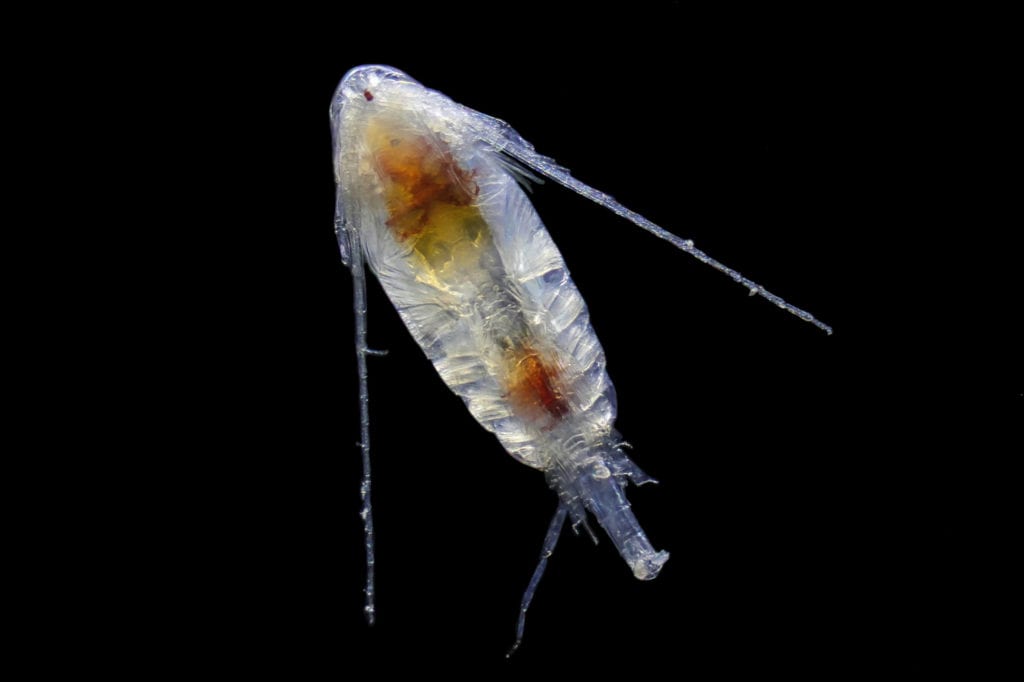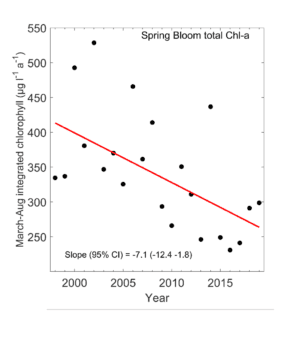
A mild winter combined with an abnormally calm and sunny summer led to marine water temperatures that doubled the previous marine heat wave’s record in Prince William Sound this year. Prince William Sound Science Center oceanographer Rob Campbell observed that monthly average temperatures at the surface during the months of July and August were 7 degrees Fahrenheit above the seasonal average with one observation of 9 degrees above average.
Temperatures are recorded by Campbell for his work with the Gulf Watch Alaska program. In addition to routine measurement of various oceanographic parameters at 12 different locations in the Sound, Campbell maintains the Prince William Sound Autonomous Profiler, or PAMPR. The PAMPR journeys from a depth of 60 meters to the surface twice a day, measuring temperature, salinity, oxygen concentrations, chlorophyll-a concentrations, turbidity and nitrate concentrations. A recently added plankton camera goes along for the ride as well.

Campbell compares the temperature data from the PAMPR to chlorophyll-a and nitrate concentrations to observe how phytoplankton, the base of the marine food chain, are reacting to these environmental changes. It appears that phytoplankton have been declining. For the last two decades, the overall productivity of the spring plankton bloom in Prince William Sound has been diminishing. Campbell thinks that this is probably due to limited nutrients in a changing surface layer.
Every year, waters in the sub-arctic go through a cycle. Winter wind and wave action mix cold, nutrient-rich waters from the depths up to the surface. By spring, the combination of these nutritious, rich waters and increasing sunlight at the surface are ideal for a big plankton bloom. As the spring sun shines on the water, and less dense fresh water from melting glaciers flows into the ocean, a strong surface layer forms where the plankton bloom is “pinched off.” Until the next fall and winter storm cycles there isn’t much transfer between that warm top layer and the cold nutrient rich water below. The nutrients that are there are all the plankton get.

Campbell thinks that the declining trend in productivity might have to do with a change in the depth of that warm surface layer. He estimates that the surface layer was historically closer to 40 or 50 meters in depth, giving the plankton a lot more nutritious water to grow in. In recent years the layer has been closer to 10 or 20 meters deep.
Low phytoplankton productivity can be expected to work its way up the food chain, and Campbell is keeping an eye on the next level too — zooplankton. After the marine heat wave, known as the “blob,” from 2014-2016, Campbell saw an interesting shift in the zooplankton of Prince William Sound. Starting in 2015, there were more zooplankton than average, contrary to low phytoplankton concentrations. Further investigation offered an explanation. The number of warm-water zooplankton species that are more typically found in Oregon and Washington skyrocketed, while the numbers of typical cold-water species were below average. In general, warm water species are smaller and need less food, so it makes sense that their numbers would be high despite low phytoplankton productivity.
What happens next as a result of the layer of exceptionally warm water in Prince William Sound, depends on what kind of winter we have. We need our normally intense North Pacific storms to mix everything up, Campbell says. A mild winter could lead to another persistent marine heat wave.
Teal Barmore covers news for the Prince William Sound Science Center’s research and monitoring programs. More of her work can be seen at pwssc.org/news.





